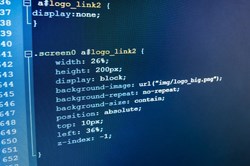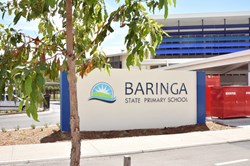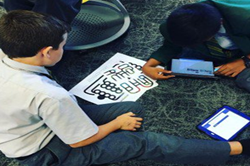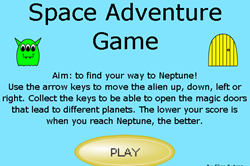CS Unplugged: Field guide: Programming Languages
An online resource for teaching Computer Science to students, this chapter focusses on Programming Languages. This chapter covers what happens when you write and run a program, and how this affects the way that you distribute the program for others to use.
Additional details
| Year band(s) | 5-6, 7-8, 9-10 |
|---|---|
| Format | Web page |
| Core and overarching concepts | Implementation (programming) |
| Australian Curriculum Digital Technologies code(s) |
AC9TDI6P01
Define problems with given or co developed design criteria and by creating user stories
AC9TDI6P02
Design algorithms involving multiple alternatives (branching) and iteration
AC9TDI6P05
Implement algorithms as visual programs involving control structures, variables and input
AC9TDI8P04
Define and decompose real-world problems with design criteria and by creating user stories
AC9TDI8P05
Design algorithms involving nested control structures and represent them using flowcharts and pseudocode
AC9TDI8P06
Trace algorithms to predict output for a given input and to identify errors
AC9TDI8P09
Implement, modify and debug programs involving control structures and functions in a general-purpose programming language
AC9TDI10P04
Define and decompose real-world problems with design criteria and by interviewing stakeholders to create user stories
AC9TDI10P05
Design algorithms involving logical operators and represent them as flowcharts and pseudocode
AC9TDI10P06
Validate algorithms and programs by comparing their output against a range of test cases
AC9TDI10P09
Implement, modify and debug modular programs, applying selected algorithms and data structures, including in an object-oriented programming language |
| Keywords | Programming Languages, Programming, Python, Java, ByteCode |
| Organisation | University of Canterbury, New Zealand |
| Copyright | University of Canterbury, New Zealand. Creative Commons BY-NC-SA 4.0. |
Related resources
-

A matter of style
In this lesson sequence, students using the Zen Garden website reflect on criteria for effective design.
-

Google CS First: Storytelling
CS First: Storytelling guides students to use block-based coding in Scratch projects through a series of themed activities.
-

Baringa State Primary School: Implementation of STEM
Baringa PS uses a cross-disciplinary approach that integrates STEM disciplines around relevant contexts (ie a problem, question, product or issue).
-

Parramatta Marist High: Building a programming mindset
Kelly Bauer explains how video games are the starting point for Year 7 students at Parramatta Marist High to learn about coding.
-

Torrens Valley Christian School: New subject at Year 10
Fiona Clayton describes how their Year 10 Digital Technologies subject has had an impact on numbers opting to go on and study in this area.
